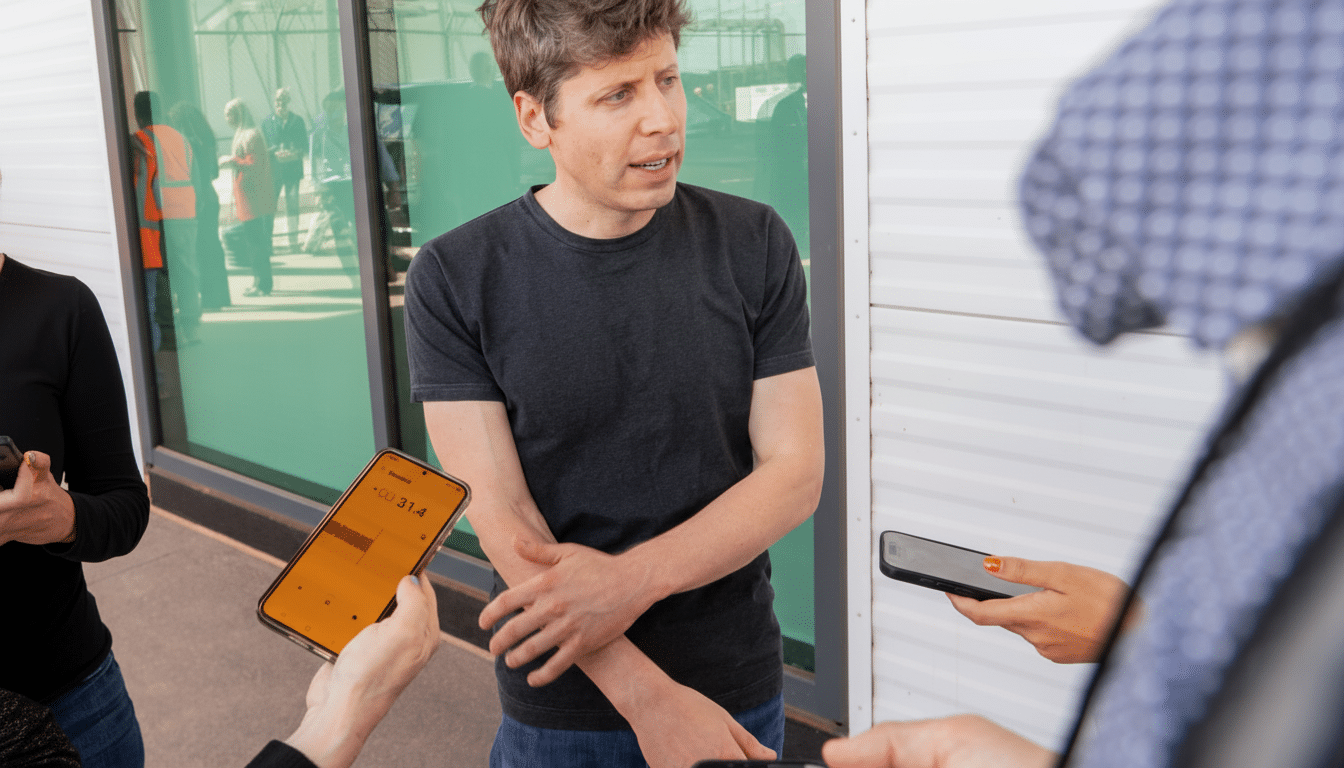Sam Altman has for the first time offered a clear picture of OpenAI’s hardware ambitions, describing something designed to be placid rather than flashy.
At a talk at Emerson Collective’s Demo Day with Laurene Powell Jobs, the OpenAI CEO described the social product’s “vibe” as the opposite of notification-choked smartphones, fitting its long-running co-development with Lord of Form himself, Jony Ive.

Details were scant, but Altman may have been drawing a picture of an experience balanced with trust, context awareness, and neurorestraint — technology that surfaces the information when it’s really necessary. Ive added that the product may be less than two years away, underlining an effort to translate OpenAI’s software advances into a simple, physical friend.
A Less-Anxious Way to Outsmart Your Smartphone
Altman compared today’s phones and apps to taking a walk through Times Square — bright, crowded, and overwhelming. For the new device, he wants something that feels like a quiet lakeside cabin. The aim is emotional as much as it’s technical — less friction, fewer pings, and an interface that fades into the background until it pops up when you really need help.
The pitch plays into a common problem. Digital distractions lead to higher levels of stress, per research cited by the American Psychological Association and UC Irvine, and to worse productivity. Research in cognitive science links digital interruptions to higher stress and reduced performance. Tech companies have attempted “digital wellbeing” dashboards and notification bundles; Altman’s response is to redesign the hardware–software stack so that you start in a calm default state.
What OpenAI Is Suggesting the Device Will Do
OpenAI’s device is widely believed to be small and probably doesn’t have a screen; it will resemble a companion more than an actual computer. Altman focused on a system that learns context over long periods, earns user trust, and makes judgment calls about when to speak up or let things be. In practice, it’s less a launchpad than an attentive assistant.
That vision coincides with OpenAI’s efforts to build multimodal models that can “see,” “hear,” and “speak,” not just respond “yes” or “no” to text chat but act in a continuous, real-world environment. If it delivered on its promise, the device would be able to take care of things, summarize what’s important, and mediate communication without grabbing for your attention every minute.
The Ive Factor and a Philosophy of Design Restraint
Jony Ive’s participation suggests that material simplicity and intuitive interaction are a focus. And he and Altman agreed that users could end up responding with “that’s it?” — a revelation less showy and more understated. With Ive’s design background, that could mean minimal surfaces as well as natural inputs — perhaps voice — and invisible complexity.

Reports over the past year have suggested OpenAI and Ive’s team were iterating on form factors as they grappled with software and hardware problems. Still, Ive’s timeline suggests that the team believes the right elements are coming together: model power, on-device sensing, and interface metaphors.
Learning From the Recent AI Gadget Failures
The graveyard is full of them. The Humane AI Pin sought to make assistance ambient but had issues with reliability, ergonomics, and battery life. Rabbit’s R1 pledged agentic automation but faced performance questions and a fuzziness about its everyday value. Both exposed hard problems — latency, context capture, and giving people a reason to want AI, not just to have it appear cool.
OpenAI’s bright side is that it has a five-year head start in developing model ecosystem maturity and frequent capability releases. If the device can blend high-quality speech output, solid memory, and good judgment over when to interrupt, it might just avoid being one more place I get notifications. The question will be whether it really takes that cognitive load away day to day.
Open Questions on Trust, Privacy and Price
An ambient assistant will also require an unusual amount of autonomy, which raises alarms all its own. How much context will it retain, and where will that data reside? Where will the most sensitive processing be handled — on-device or in the cloud — and how do users control retention? Regulators in both the U.S. and Europe are already monitoring AI privacy and transparency; a widely pervasive assistant will be held to a higher standard.
There’s also the business model. More than many other AI gadgets so far, it has struggled to justify an upfront price and ongoing subscriptions. OpenAI’s success might depend on bundling services users already treasure — productivity, scheduling, triaging our messages — without encroaching on the distractible patterns it aims to supplant.
Why Altman’s Calm-First Device Vibe Matters Now
In positioning “calm” as a design objective, OpenAI is staking out cultural territory as much as technical terrain. If it does indeed help the device “know when not to be on” (which it already seems pretty good at doing, with a couple caveats), and follow life’s context much better, reducing the micro-decisions we make on these screens, it could be something of a reset in personal computing. If not, it could become one in a series of ambitious but short-lived experiments.
The next breakthrough is not a spec sheet but evidence that an agnostic AI could be a low-friction presence. Altman and Ive say they hope users will feel relief. The market will ultimately decide whether that sentiment turns into anything real.

